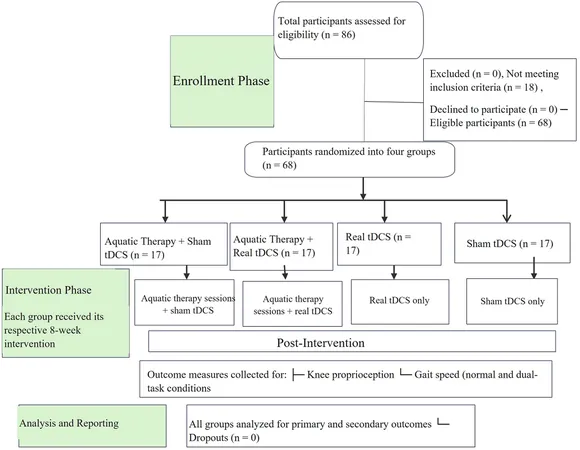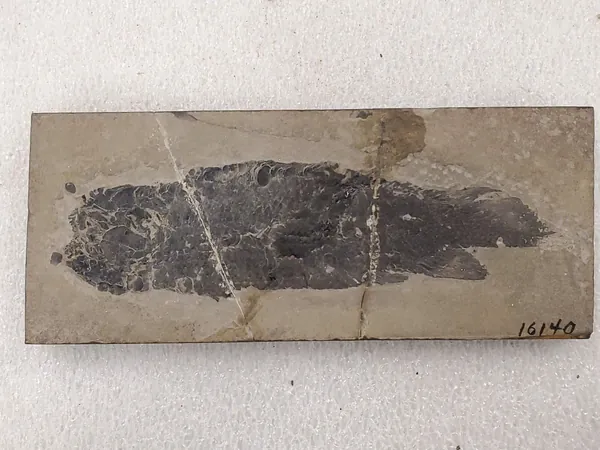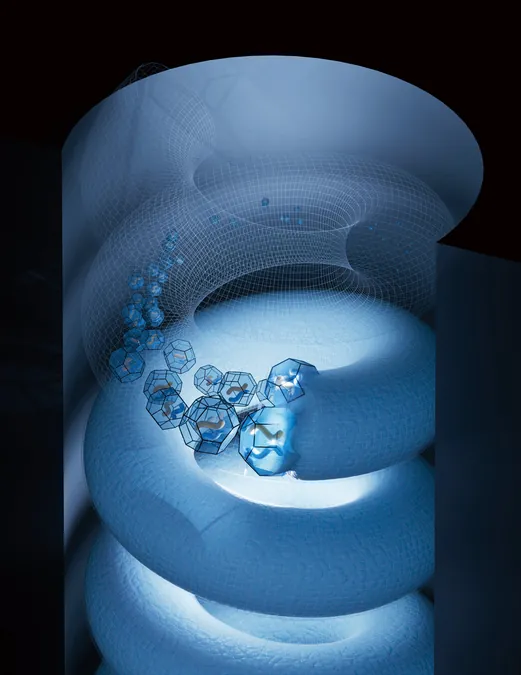
Unlocking Movement: How Combining Aquatic Therapy with tDCS Could Revolutionize Treatments for Older Adults with Knee Osteoarthritis
2025-09-02
Author: John Tan
A Growing Crisis: Knee Osteoarthritis in the Elderly
Knee osteoarthritis (KOA) is an escalating global health challenge, particularly impacting older adults. In 2019 alone, 364.6 million individuals were grappling with KOA, with women disproportionately affected. It’s a condition synonymous with debilitating pain, stiffness, and loss of function. Alarmingly, over half of women and more than a third of men over 50 report knee pain associated with this ailment.
The Hidden Costs of KOA: More Than Just Pain
KOA isn’t just a source of physical pain; it severely hinders mobility, leading to disabilities in around 66% of affected individuals. This issue accounts for a staggering 2.4% of global years lived with disability, emphasizing the pressing need for effective intervention strategies. Among the many factors influencing quality of life, proprioception and gait speed stand out as critical indicators of functional independence.
Understanding the Basics: Proprioception and Gait Speed
Gait speed, often dubbed the 'sixth vital sign,' serves as a reliable predictor of disability and mortality risk. Paired with proprioception, which ensures joint stability and balance, these factors become essential for evaluating therapy effectiveness. The degradation of mechanoreceptors in KOA severely blunts proprioceptive feedback, leading to joint instability and increased fall risks.
Existing Treatments: Are They Enough?
Current conservative treatments aim primarily at pain relief and muscle strengthening, but their efficacy in addressing proprioceptive deficits and gait disturbances often falls short. While some standard therapies yield minor improvements, they frequently do not restore functional capability.
Exploring New Frontiers: Aquatic Therapy and tDCS
Recent studies spotlight the potential of innovative therapies like Aquatic Therapy and transcranial direct current stimulation (tDCS). Aquatic Therapy utilizes the unique properties of water—such as buoyancy and resistance—to enhance strength, proprioception, and agility. Preliminary findings suggest that an eight-week aquatic regimen can substantially boost both proprioception and fast-paced gait speed.
Conversely, tDCS works by modulating brain activity, fostering neuroplasticity, and enhancing proprioceptive ability. Studies have shown marked improvements in gait function for various clinical populations using tDCS.
The Power of Combination: A Game Changer for Rehab?
While both therapies have shown promise individually, recent research suggests that combining aquatic therapy with tDCS could lead to even more significant improvements in proprioception and gait speed among older adults with KOA. This multimodal approach targets both neural and physical aspects of movement, aiming to transcend traditional rehabilitation barriers.
The Trial: Research Design and Methodology
A groundbreaking randomized, triple-blind, sham-controlled clinical trial was set in motion to assess the combined impact of Aquatic Therapy and tDCS on older adults suffering from KOA. Following ethical approvals, the study enlisted 68 elderly women diagnosed with KOA through rigorous medical evaluations.
The participants were randomly divided into four groups, receiving either actual or sham tDCS in conjunction with aquatic therapy. Blinding ensured that neither participants nor evaluators had knowledge of group assignments, thus maintaining the integrity of the data.
Key Findings: Unveiling Improvements in Mobility
The trial’s results showed significant improvements across multiple parameters. Notably, combined interventions yielded substantial enhancements in knee proprioception and gait speed—particularly in dual-task scenarios that mimic real-life challenges.
While the Aquatic Therapy + Real tDCS group outshined others, all active intervention groups demonstrated remarkable benefits over the sham group, painting a promising picture for future therapeutic strategies.
Looking Ahead: The Future of KOA Treatment
These captivating findings underscore the potential for new integrative approaches in managing knee osteoarthritis. Further studies are warranted to explore long-term effects, potential gender differences, and optimal conditions to maximize the efficacy of tDCS combined with physical therapy.
As we stride into a new era of rehabilitation, the combination of aquatic therapy and neuromodulation through tDCS sets an exciting precedent for improving mobility and quality of life for older adults battling knee osteoarthritis.



 Brasil (PT)
Brasil (PT)
 Canada (EN)
Canada (EN)
 Chile (ES)
Chile (ES)
 Česko (CS)
Česko (CS)
 대한민국 (KO)
대한민국 (KO)
 España (ES)
España (ES)
 France (FR)
France (FR)
 Hong Kong (EN)
Hong Kong (EN)
 Italia (IT)
Italia (IT)
 日本 (JA)
日本 (JA)
 Magyarország (HU)
Magyarország (HU)
 Norge (NO)
Norge (NO)
 Polska (PL)
Polska (PL)
 Schweiz (DE)
Schweiz (DE)
 Singapore (EN)
Singapore (EN)
 Sverige (SV)
Sverige (SV)
 Suomi (FI)
Suomi (FI)
 Türkiye (TR)
Türkiye (TR)
 الإمارات العربية المتحدة (AR)
الإمارات العربية المتحدة (AR)